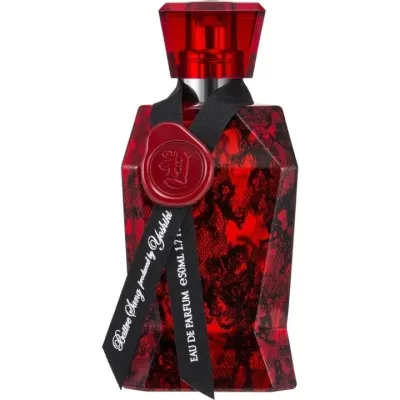

























































































































































































































































































































































































































































































































































































































































































































































































































































































































































































































































































































![First Night [On Planet Earth] Aftershave & Cologne](https://wikifragancias.com/images/perfumes/phoenix-artisan-accoutrements/first-night-on-planet-earth-aftershave-amp-cologne/400.webp)
![First Night [On Planet Earth] Eau de Parfum](https://wikifragancias.com/images/perfumes/phoenix-artisan-accoutrements/first-night-on-planet-earth-eau-de-parfum/400.webp)
![First Night [On Planet Earth] Solid Cologne](https://wikifragancias.com/images/perfumes/phoenix-artisan-accoutrements/first-night-on-planet-earth-solid-cologne/400.webp)























































































































































































































































































































































































































































































































































































































































































































































































































































































































































































































































































































































































































































































































































































































































































































































































































































































































































































































































































































































































![Urban Beats [Green Edition]](https://wikifragancias.com/images/perfumes/macson/urban-beats-green-edition/400.webp)
































































































































































































































![[Urban Petunia]](https://wikifragancias.com/images/perfumes/sklva/urban-petunia/400.webp)










Carnation, also known as Dianthus Caryophyllus, is a flowering plant native to the Mediterranean region. It is a member of the Caryophyllaceae family and is highly prized for its vibrant colors and unique scent. Carnations come in various shades, including pink, red, white, and purple, making them a popular choice for bouquets and floral arrangements. The scent of Carnation is often described as spicy, clove-like, and slightly floral, with hints of pepper and cinnamon.
In perfumery, Carnation is used as both a top, heart, and base note, depending on the composition of the fragrance. As a top note, Carnation adds a fresh and spicy kick to the opening of the scent, immediately capturing the attention of the wearer. Its peppery and zesty nuances create a lively and invigorating introduction, setting the tone for the rest of the perfume. As a heart note, Carnation brings warmth, depth, and sensuality to the fragrance, enveloping the wearer in its rich and spicy aroma. Its floral undertones add a touch of sweetness and femininity, balancing out the more intense spices. As a base note, Carnation provides longevity and staying power to the perfume, ensuring that its captivating scent lingers on the skin for hours.
One of the key characteristics of Carnation is its spicy and peppery scent profile. This is due to the presence of eugenol, a compound that is also found in cloves. Eugenol gives Carnation its distinctive clove-like aroma, adding a warm and exotic twist to the fragrance. In addition to eugenol, Carnation contains other aromatic compounds such as linalool, methyl eugenol, and benzyl acetate, which contribute to its complex and multifaceted scent. The combination of these compounds gives Carnation its signature spicy, floral, and slightly sweet fragrance, making it a popular choice for perfumers seeking to create rich and opulent scents.
Carnation is a versatile fragrance note that can be found in a wide variety of perfume compositions, from classic floral bouquets to oriental and spicy blends. It is often used in combination with other notes such as rose, jasmine, clove, cinnamon, and sandalwood to create unique and captivating fragrances. Carnation adds a touch of sophistication and elegance to perfumes, making them more complex and intriguing. Its spicy and peppery nuances make it suitable for both men's and women's fragrances, adding depth and character to the scent.
One of the most famous perfumes that feature Carnation as a prominent note is Caron's "Bellodgia". This iconic fragrance, created in 1927 by perfumer Ernest Daltroff, is a floral masterpiece that showcases the beauty and complexity of Carnation. "Bellodgia" is a rich and opulent scent that blends Carnation with notes of rose, jasmine, ylang-ylang, and sandalwood, creating a sensual and intoxicating perfume that has stood the test of time. It is a classic example of how Carnation can be used to create a sophisticated and elegant fragrance that is both timeless and alluring.
Another popular fragrance that features Carnation is Serge Lutens' "Vitriol d'Oeillet". This modern interpretation of Carnation is a spicy and bold scent that captures the fiery and passionate essence of the flower. "Vitriol d'Oeillet" combines Carnation with notes of clove, cinnamon, pepper, and patchouli, creating a dynamic and intense fragrance that is both daring and seductive. It is a modern take on Carnation that showcases its versatility and ability to add intrigue and allure to a perfume composition.
In conclusion, Carnation is a timeless and versatile fragrance note that has been cherished by perfumers for centuries. Its spicy, peppery, and slightly sweet aroma adds depth, complexity, and elegance to any perfume composition, making it a popular choice for both classic and modern fragrances. Whether used as a top, heart, or base note, Carnation brings warmth, sensuality, and sophistication to the scent, creating a captivating and alluring olfactory experience. Its exotic and intoxicating scent has captured the hearts of perfume lovers around the world, making Carnation a beloved and iconic fragrance note in the world of perfumery.